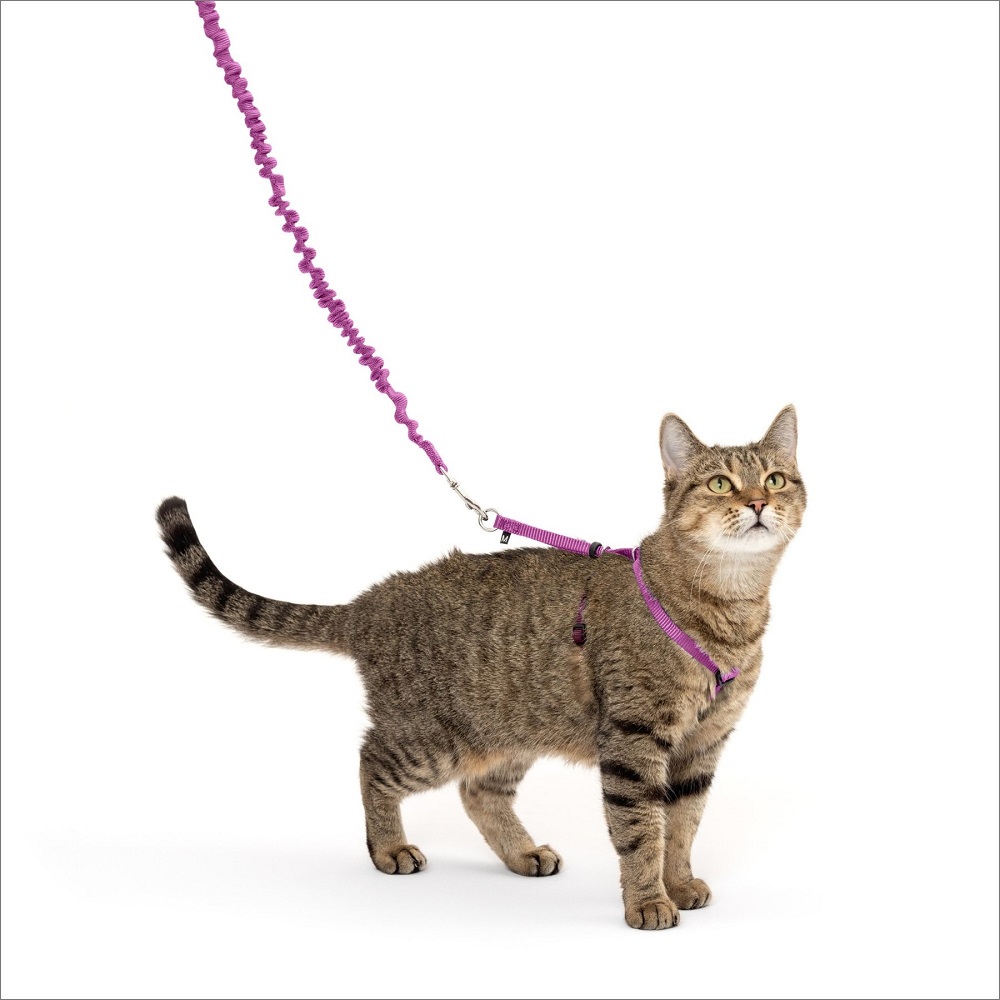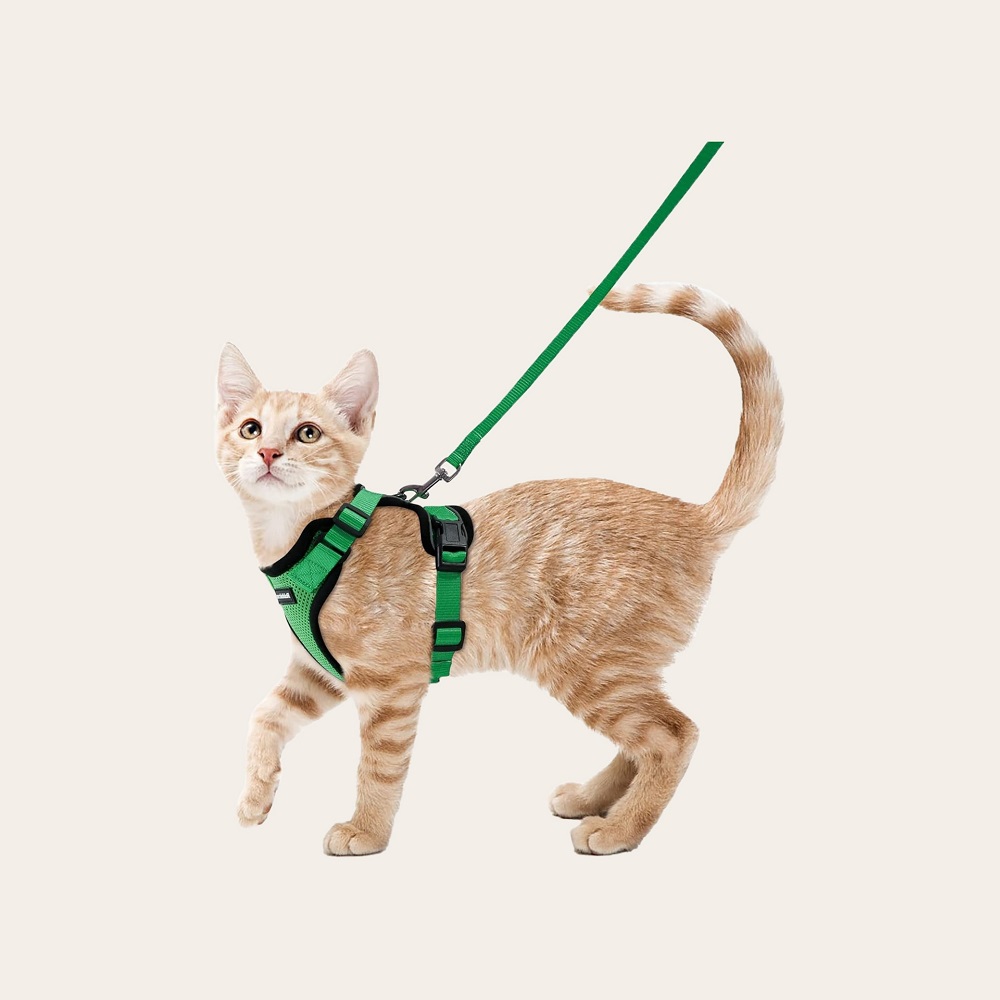Taking a cat outdoors can sound like a fun and adventurous idea, but it comes with its own set of challenges. Many cat owners wonder if their feline friends can wear leashes and how to make outdoor adventures safe and enjoyable. In this article, we’ll delve into the ins and outs of leash training for cats, exploring the benefits, potential hazards, tips for success, and much more.
Understanding Cat Behavior
Why Cats are Different from Dogs
Cats and dogs exhibit distinct behavior patterns largely due to their evolutionary backgrounds. Dogs are pack animals, which is a fundamental aspect of their social structure. This makes them more inclined to follow commands and accept human leadership. On the other hand, cats are solitary hunters; their evolutionary trait makes them more independent and less likely to respond to commands in the same way dogs do.
Understanding this difference is essential for cat owners contemplating leash training. Many cats may not respond to typical leash commands or might resist wearing a harness altogether. If you plan to take your cat outdoors, it’s critical to respect their natural instincts and learn how to work with them. Instead of enforcing commands, focus on communication and establishing a bond with your cat that encourages cooperation.
The Benefits of Leash Training
Despite the differences in behavior, leash training can offer substantial benefits for both cats and their owners. One of the key advantages is the opportunity for outdoor exploration. Indoor cats may lack the stimulation needed for their physical and mental well-being, and leash training walking can provide that necessary enrichment. Fresh air, new scents, and varied sights can relieve boredom, reducing destructive behaviors at home.
Leash training allows owners to control their cat’s environment. Unlike free roaming where they could encounter various dangers such as aggressive dogs or vehicles, a leash training ensures your cat remains secure. It also enables you to introduce them gradually to new experiences, helping them build confidence in unexplored outdoor environments. Socialization is another benefit; leash walking can reduce anxiety about encountering other pets and humans.

Choosing the Right Gear
The Importance of a Quality Harness
When considering outdoor adventures, the choice of equipment is paramount. Unlike dogs, cats cannot be trained to wear traditional collars and walk on leashes effectively. Instead, a well-fitted harness is essential. A cat harness should be snug enough to prevent escape but not so tight that it causes discomfort. Look for harnesses that are designed specifically for cats, offering a secure but comfortable fit around the chest and neck.
There are multiple types of harnesses available—vest-style, H-straps, and more. Vest-style harnesses are generally recommended as they distribute pressure evenly across the cat’s body, reducing the risk of injury. Make sure to measure your cat before purchasing a harness. While shopping, consider factors like weight, breed size, and fur type to select the most suitable option.
Selecting an Appropriate Leash
Once you’ve chosen a harness, the next step is selecting the right leash. Opt for a lightweight and durable leash, ideally around six feet long. This length provides flexibility, allowing your cat enough room to explore without straying too far from you. Avoid retractable leashes, as they can cause injury if a cat suddenly darts away or if the mechanism fails.
Consider using a padded leash training for additional comfort. Thick, padded leashes can help you maintain a good grip while reducing strain on your hands, especially if your cat suddenly pulls or makes a sharp turn. Keep the colors and patterns in mind as well; bright or reflective colors may enhance visibility during low light conditions, ensuring that your cat is seen by others.
Introducing the Harness
Creating a Positive Association
The first step to successful leash training is getting your cat accustomed to the harness. Introduce the harness gradually, allowing your cat to explore it without forcing them to wear it right away. You can place the harness near their favorite resting spot or engage your cat with treats when they interact with it. This creates a positive association, making them more likely to accept the harness later.
Patience is key during this introduction phase. Some cats may take mere minutes to accept a new item, while others may need days or even weeks of gradual exposure. If your cat shows signs of stress or anxiety, return to a less invasive approach. Don’t rush the process; building trust and comfort with the harness can lead to a more enjoyable experience for both of you in the long run.
Gradually Adding the Leash
Once your cat is comfortable wearing the harness, it’s time to introduce the leash. Similar to how you introduced the harness, allow your cat to get used to the leash while it is indoors. Start by letting them drag it around without holding it. Monitor their behavior closely; if they seem to be bothered, distract them with toys or treats to reinforce a positive experience.
After a couple of days of acclimatizing to the leash training, try gently holding it while indoors. Allow your cat to walk freely and explore while still being secured to the leash training. It’s important to let your cat determine the pace rather than leading them right away. This gradual adoption helps in building confidence and comfort with the complete setup before stepping outside.

Preparing for Outdoor Adventures
Choosing the Right Location
Before heading outdoors, plan your locations wisely. It’s crucial to select safe environments away from traffic, aggressive animals, and high-stress situations. Parks with designated pet areas or quiet residential streets are excellent options for initial walks. Always consider your cat’s temperament—if your feline friend is easily frightened by loud noises or large crowds, opt for quieter locales.
Expect to conduct some trial runs to determine your cat’s preferences. Once you find a few suitable spots, they can become your go-to locations for outdoor ventures. Knowing these surroundings can also serve as a great way to build positive experiences. Over time, your cat will become familiar with these settings, easing their anxiety and making future trips more enjoyable.
Weather Considerations
Planning your outdoor adventures must also account for weather conditions. Cats are particularly sensitive to extreme temperatures. As a general rule, avoid exposing your cat to temperatures below 45 degrees Fahrenheit (7°C) or above 85 degrees Fahrenheit (29°C). Hot pavement can burn their paws, while cold surfaces can chill them too quickly.
Additionally, monitor for environmental hazards such as rain, snow, or high winds, which can affect your cat’s comfort and make the experience less enjoyable. Always keep water on hand, particularly on warm days, as your cat can become dehydrated quickly. Pay attention to your cat’s behavior; if they display signs of discomfort or disinterest in walking, be prepared to cut the outing short and head back indoors.
Safety Measures
Monitoring Your Cat Closely
Safety should always be your top priority when walking your cat. Always keep a watchful eye for sudden changes in behavior or potential dangers. If your cat appears anxious, frightened, or begins to retract, stop walking and reassure them. This added attention can also help build your bond, establishing that you are a reliable presence in unfamiliar environments.
Avoid letting your cat explore freely; while they may have moments of curiosity, they can just as quickly become startled and bolt. Keep the leash training moderately taut but not restrictive, allowing for a balance between exploration and control. If other animals or unpredictable situations arise, try to calmly redirect your cat’s attention back to you.
Emergency Preparedness
Even the most careful cat owners can encounter unexpected situations. It’s wise to have a plan in place should any emergencies arise during your outdoor adventure. Keep a small first-aid kit handy that includes items like antiseptic wipes, bandages, and a pair of tweezers for emergencies. You may also want to carry some treats to reward or distract your cat if they feel anxious.
Your phone should be charged and easily accessible for emergencies, whether that means calling someone to help or finding directions to a nearby veterinary clinic. It’s advisable to tag your cat with an ID collar or microchip for added safety. This gives you peace of mind knowing there’s a way back should your cat slip away or get lost while on an outdoor adventure.

Behavioral Tips for a Successful Adventure
Using Positive Reinforcement
Training your cat to enjoy walking on a leash often relies upon positive reinforcement. Praise, treats, and petting can all help your cat associate using the leash or harness with positive experiences. If your cat walks alongside you without pulling or exhibiting stress, reward their good behavior immediately. This teaches them that being calm and compliant leads to positive outcomes, encouraging repeat behavior.
Make sure to keep the treats small, so they don’t distract; quick snacks can be a great way to keep your cat motivated. Additionally, doing this helps them understand that they will receive a reward during their time outdoors rather than only at the end of the session.
Creating Short Sessions
When cat owners embark on outdoor adventures, don’t forget to limit the length of your walks. Begin with short sessions—5 to 10 minutes is often sufficient for a first outing. This prevents overwhelming your cat and allows them to adapt to new sights, sounds, and smells without feeling stressed. As they grow accustomed to walking outdoors, gradually increase the duration of your walks at their pace.
Be mindful that every cat is different, so pay attention to any signs of fatigue or distress. Frequent, shorter walks may ultimately prove more beneficial than prolonged outings; this applies especially during the early phases of leash training. Creating a positive association with outdoor excursions encourages them to see these experiences as enjoyable, fostering a long-term enthusiasm for future adventures.
Ensuring Long-Term Enjoyment
Consistency is Key
To ensure your cat continues to enjoy outdoor adventures, establish a consistent routine. Regularly scheduled walks help solidify your cat’s expectations for outdoor experiences, allowing them to look forward to these moments. This routine can also train them to recognize when it’s time to wear the harness and leash training, making the experience more predictable and less daunting.
Moreover, engage your cat in activities that stimulate their mind and body alongside leash training. This could involve play with toys that appeal to their interests or setting mini-obstacles in your yard as they become more comfortable. Varying the routine prevents monotony and keeps your cat engaged in the whole process, turning leash training walks into exciting adventures rather than mere exercises.
Reading Your Cat’s Cues
It is essential to pay close attention to your cat’s body language. Every feline reacts uniquely to new situations, and they’re likely to exhibit cues indicating their feelings. Signs of happiness may include a relaxed posture, purring, and approaching you for affection. Conversely, a cat that’s feeling tense may display flattened ears, a puffed-up tail, or avoidance behaviors.
Understanding these cues allows you to adapt your approach in real-time. If your cat shows signs of anxiety, allow them to explore at their own pace or take them back to an environment they find comforting. Remember that these adventures are meant to build trust and enjoyment, not stress, so always prioritize your cat’s comfort during the outings.
Conclusion
In summary, leash training your cat can open the door to exciting outdoor adventures that benefit both your pet and you. By understanding feline behavior, choosing the right gear, creating positive experiences, and ensuring safety, you can foster a delightful atmosphere for exploration. Respecting your cat’s nature while eliminating external hazards will cultivate a strong bond built on trust during your outdoor excursions.
With perseverance and patience, you can make these moments enjoyable, stimulating, and safe for your beloved feline friend, encouraging countless memorable experiences together. So go ahead—grab that harness and leash and embark on a world of discoveries with your cat today!










